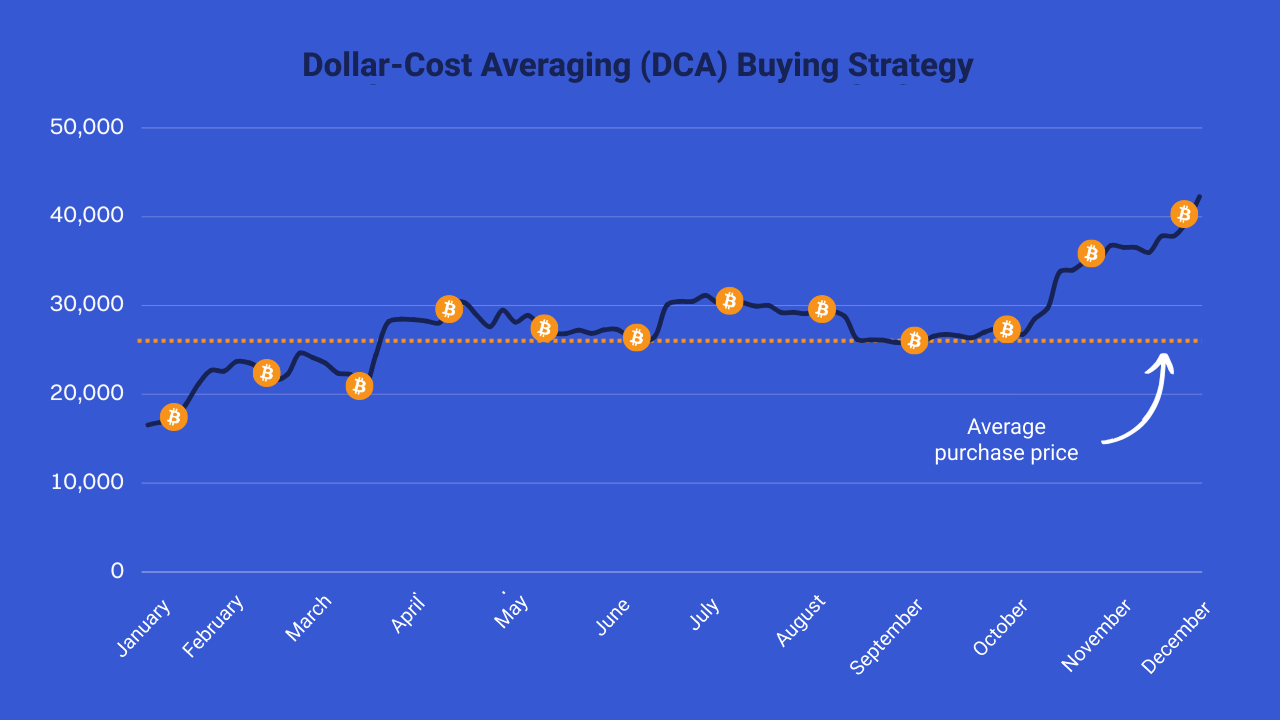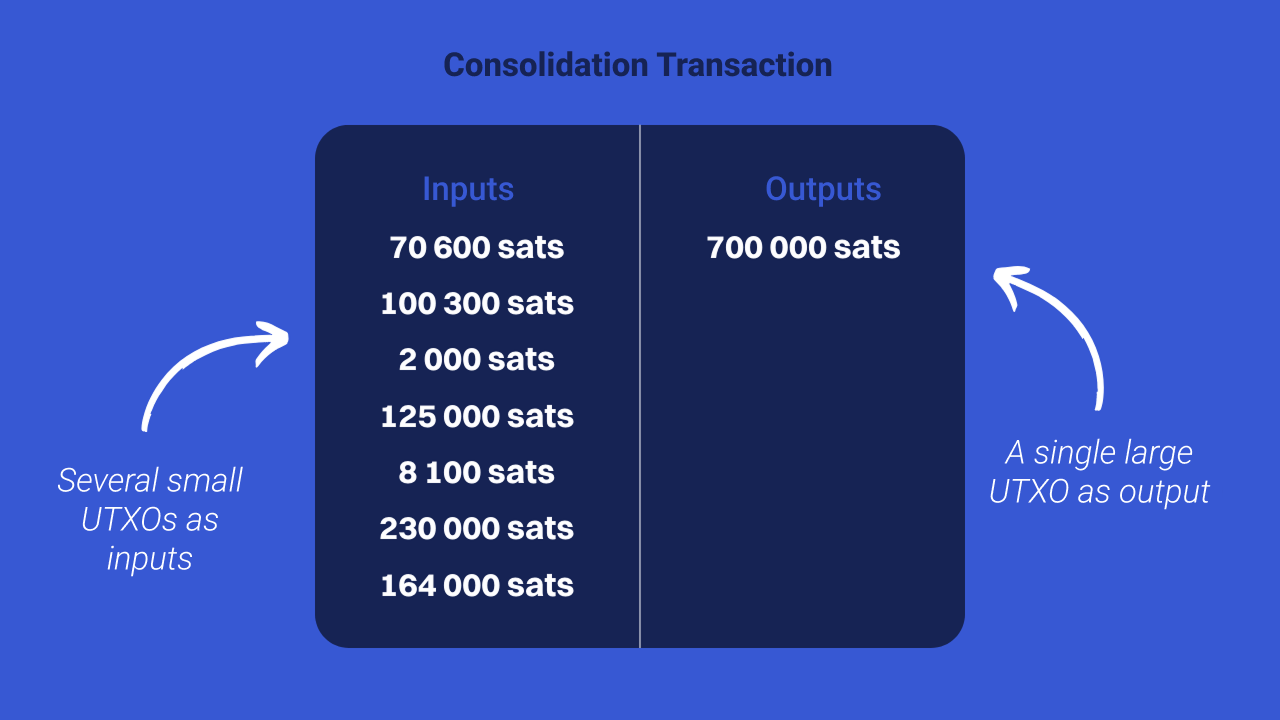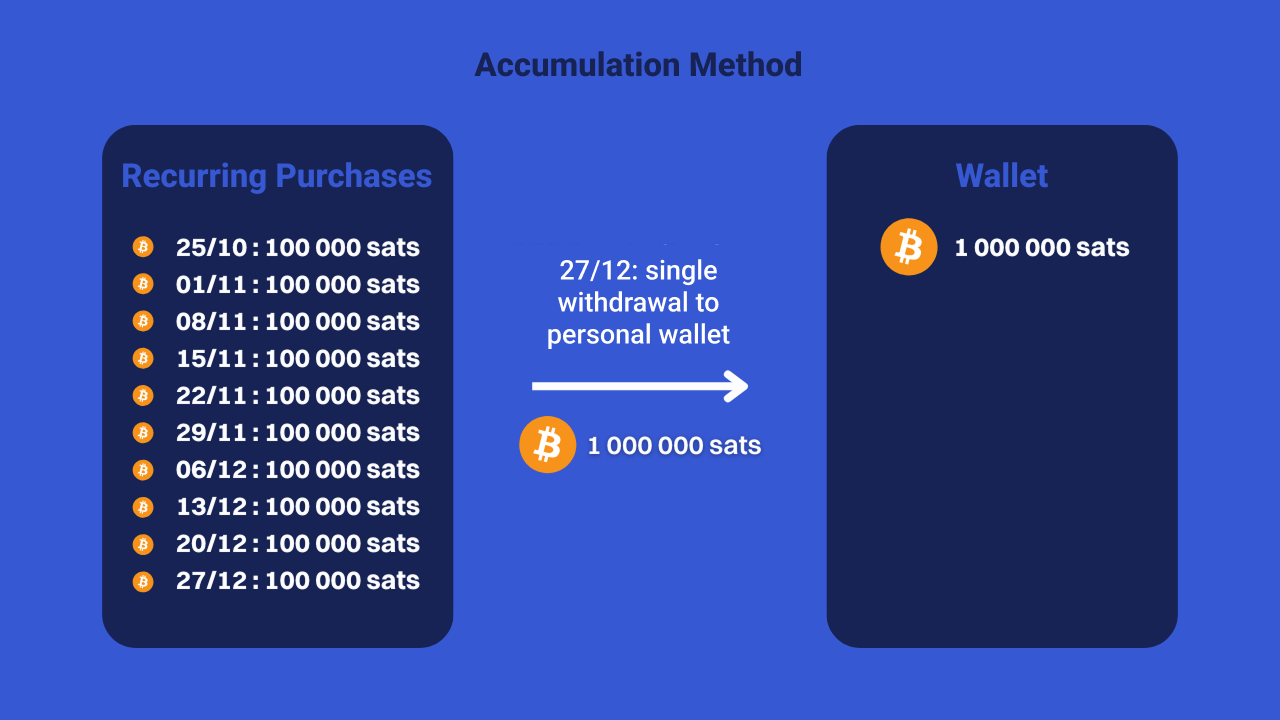Get started
Get started

Investing in bitcoin using the Dollar-Cost Averaging (DCA) method is a particularly wise strategy. However, the regular purchases inherent in this method can lead to the accumulation of numerous small UTXOs. During an increase in transaction fees on the Bitcoin network, it may become economically unrational to spend these small pieces of BTC. The purpose of this article is to simply explain this potential risk to your investment. We also inform you about who is affected by this risk and how to avoid it if you are exposed to it.
Units of account, which are also called “bitcoins”, materialize in the form of UTXO (Unspent Transaction Output). UTXOs are therefore more or less large pieces of bitcoin. There can be 500 BTC, just as there can be 0.00001000 BTC. For Bitcoin, UTXO is therefore the equivalent of a euro note or coin. It is the support on which the value is placed.
The “sat” or “satoshi” is the name of the smallest unit on Bitcoin, much like the cent for the euro: 1 SAT = 0.00000001 BTC.
On Bitcoin, users have to pay transaction fees to spend their UTXO. These fees are collected by the miner who includes the transaction in a block in order to confirm it. However, the amount of fees required to complete a trade varies widely and can sometimes be very high. In this case, having numerous low-value UTXOs in your Bitcoin wallet can, in times of rising fees, make their use economically unrational, especially if the fees exceed the value of the UTXOs themselves.
And precisely, the practice of DCA (Dollar-Cost Averaging), which consists of regularly acquiring small amounts of bitcoin, can sometimes lead to the accumulation of numerous small UTXOs. In this article, our aim is to demystify this situation and to give you strategies to avoid being exposed to this risk.

If you choose to leave your bitcoins on the Bitstack app after buying them, then you are completely unaffected by the risk mentioned above. By doing so, you entrust the security of your bitcoins to Bitstack. Although you remain the owner of these bitcoins, which are accessible via the application, Bitstack has the private keys necessary for their use on the network. Your bitcoins are then grouped with those of other users of our platform, and Bitstack is responsible for avoiding the risks associated with low-value UTXOs.
On the other hand, if after buying your bitcoins on Bitstack, you choose to move them to your own personal Bitcoin wallet (in self-custody), you could then expose yourself to this risk.
Once your bitcoins are transferred from the Bitstack app to your personal wallet, you take full responsibility for your funds. Security, which takes the form of holding your private keys, is entirely up to you, thus exposing you to the risk associated with small UTXOs. It is up to you to take the necessary measures to avoid being exposed to this risk.
The usually recommended way to get around this problem is consolidation. This technique consists in making a transaction to your own wallet, by merging all your small UTXO inputs to generate a single large UTXO as output. It is advisable to perform this consolidation during periods of low transaction fees in order to maximize its effectiveness. If you want to know more about this practice, we have already written a detailed article on this subject with tutorials: ➤ Everything you need to know about consolidating Bitcoin coins.

Consolidating UTXO is a relevant solution when your personal portfolio already contains multiple small UTXOs. However, by opting for the purchase of bitcoins via Bitstack, you also have the possibility of intervening beforehand to avoid the need for subsequent consolidations, which are often expensive. Indeed, when you withdraw bitcoins from our application, we generate a unique UTXO to your wallet, regardless of the number of purchases previously made.
A wise approach would therefore be to buy bitcoins in Dollar-Cost Averaging on Bitstack, leaving the accumulated funds on the application, and then withdrawing all of them in a single operation once a defined threshold has been reached.
Let's take the example of a user who buys €40 worth of bitcoin every week, or around 100,000 satoshis at the current price. Instead of systematically withdrawing his bitcoins, he keeps them on the app. After 10 weeks, this user will have accumulated 1 million SATS on Bitstack. He then decides to transfer them to his personal wallet in a single withdrawal. Result: he ends up with a single big UTXO of 1 million sats, whereas by making weekly withdrawals, he would have had 10 small UTXO of 100,000 sats each. This method then allows you to benefit from the many advantages of buying a DCA while eliminating the need to consolidate small UTXOs.

All you have to do is determine the withdrawal threshold to your personal wallet. To do this, a simple calculation can be performed to estimate the threshold amount:
The calculation would then be: transaction weight x fees/acceptability rate = withdrawal threshold In our case, this would be: 141 x 800/12% = 940,000 sats. Thus, the objective would be to accumulate around 940,000 Satoshis in DCA on Bitstack before triggering a withdrawal, in order to obtain UTXOs with a corresponding minimum size.
Did you know that? Bitstack does not charge any service fees when withdrawing and takes care of all transaction fees on the Bitcoin network. So, withdrawing your bitcoins from Bitstack is completely free, at no cost to you.
➤ Discover why DCA is an interesting method.
The DCA is a particularly consistent method for investing in Bitcoin. However, an inappropriate implementation of this strategy can lead to the accumulation of multiple small UTXOs, which can become problematic during periods when fees on the Bitcoin network are high. Indeed, it may become economically unrational to spend these small UTXOs.
It is important to note that as long as your bitcoins remain on the Bitstack application, this risk does not affect you. It is exclusively for users who choose to transfer their bitcoins from Bitstack to their own wallet (in self-custody).
In this second case, it is possible to carry out consolidation transactions. However, to avoid additional fees, a relevant strategy would rather be to accumulate a certain amount of satoshis before triggering a withdrawal. This approach allows you to take full advantage of the DCA method, while avoiding the risk associated with owning small UTXOs, while enjoying the benefits of autonomous conservation.




